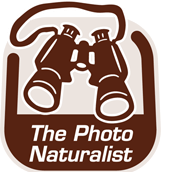**Just a note: Just click on the images to see them in a larger format.
“How can I make a unique image of a Bison?” I thought to myself. On our many trips to Yellowstone, we’ve photographed hundreds of Bison over the years. It takes something new and unique to make us want to stop and get our gear out and even attempt to make an image. Great light, a stampede, rolling in dust, fighting. But how about a backlit resting Bison? Doesn’t sound like much, but I like the backlit red “mane” and the fact that he’s looking over the edge of a precipice.
The most exciting wildlife encounter we had on the trip wasn’t really even an encounter. We had followed a game trail down to the Little Missouri River in the North Unit. Ryan popped out of the brush and onto the mud flats bordering the water. Amongst the Raccoon tracks, Mule Deer tracks and Bison tracks he found huge cat tracks. Nearly 4 inches across. The lack of claw imprints (cats can retract their claws), the fact that the track was wider than long, and the oval shape of the toe prints led us to believe they were Mountain Lion/Cougar tracks. The park wildlife biologist later confirmed it and said that they are a rarely seen but regular visitor to the park feeding on Mule Deer and Porcupine!
The last image is a running blur of a Pronghorn. Try slowing the shutter speed and panning to create an image that shows speed. While Pronghorn can top 60mph, this one was just bounding away at less than half speed.
Bison Backlit: Canon 7D, Canon 400mm f5.6, f16 at 1/250, ISO 200, handheld from car
Mountain Lion tracks: Canon 7D, Canon 400mm f5.6, f16 at 1/90, ISO 800, handheld
Pronghorn blur: Canon 7D, Canon 400mm f5.6, f5.6 at 1/60 (Shutter Priority with auto ISO as I wanted only 1/60 second at f5.6), ISO 250, handheld








